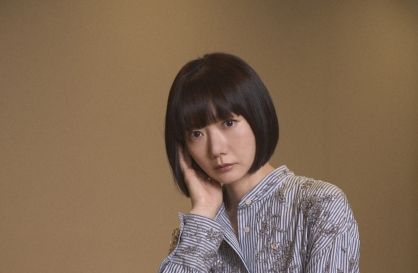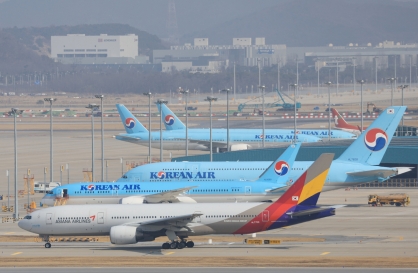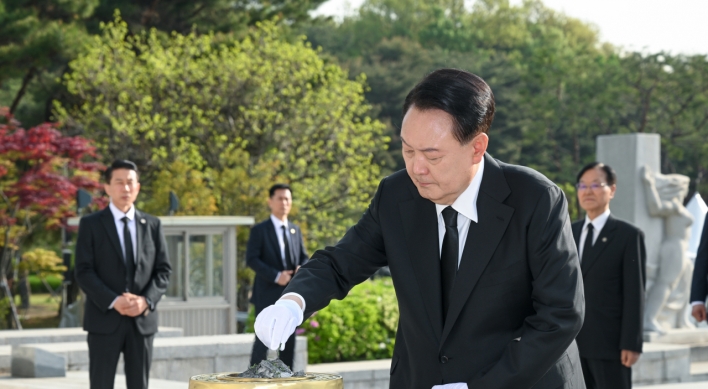An archaeological dig by the state-run Cultural Heritage Administration has found the bones of two people under ancient palace walls, suggesting that the Silla Kingdom (57 BC to 935) actually had a culture of human sacrifices.
The remains of a 166-centimeter tall man and a 159-centimeter person of unspecified gender were found under the west walls of Wolseong Palace in Gyeongju, North Gyeongsang Province, according to the Gyeongju National Research Institute of Cultural Heritage under the CHA.
Authorities believe that the two people were buried as human sacrifices around 1,500 years ago. If proven true, it would be the first proof that the legend of “Inju” -- the practice of burying people under a foundation stone in the hope that the structure would not crumble -- was actually true.
The remains of a 166-centimeter tall man and a 159-centimeter person of unspecified gender were found under the west walls of Wolseong Palace in Gyeongju, North Gyeongsang Province, according to the Gyeongju National Research Institute of Cultural Heritage under the CHA.
Authorities believe that the two people were buried as human sacrifices around 1,500 years ago. If proven true, it would be the first proof that the legend of “Inju” -- the practice of burying people under a foundation stone in the hope that the structure would not crumble -- was actually true.

“In the past, a body of a child was recovered amid the relics of the Silla Kingdom at Gyeongju National Museum, but there was controversy over whether the child was actually sacrificed,” said GNRICH chief Lee Jong-hun.
“But the bodies exhumed at this site were highly likely to have been buried after a ritual,” he added, saying that the Inju legend might turn out to be true.
But Choi Byung-hyun, a professor emeritus of archaeology at Soongsil University, told local media that it is too early to definitively say whether human sacrifices were carried out during the Silla period.
However, he said that the practice of building a wall on a spot where humans were buried suggests that great effort went into building Wolseong.
Records showed that there had been rumors about Inju in 1,343, during the Goryeo Kingdom.
An archaeological dig on the moat of Wolseong Palace uncovered 5-to-10-centimeter-tall clay figurines shaped like a person wearing Persian garments and a turban. The figurines are believed to have also been buried around 1,500 years ago as an offering.

Researchers said that the figurines appeared to be shaped after “Sogdian” -- people of an ancient Iranian civilization -- which would make them the oldest figurines of Sogdians found in Kora.
Seven “mokgan” -- wooden pieces used for recording documents before paper was invented -- were also found on the moat. Officials said that the ancient documents provided evidence on when moats were used during the Silla period and how the central government of Silla had demanded the cooperation of influential people in other regions to conscript workers for construction.
By Yoon Min-sik
(minsikyoon@heraldcorp.com)





![[From the Scene] Monks, Buddhists hail return of remains of Buddhas](http://res.heraldm.com/phpwas/restmb_idxmake.php?idx=644&simg=/content/image/2024/04/19/20240419050617_0.jpg&u=20240419175937)





![[Graphic News] French bulldog most popular breed in US, Maltese most popular in Korea](http://res.heraldm.com/phpwas/restmb_idxmake.php?idx=644&simg=/content/image/2024/04/18/20240418050864_0.gif&u=)



![[From the Scene] Monks, Buddhists hail return of remains of Buddhas](http://res.heraldm.com/phpwas/restmb_idxmake.php?idx=652&simg=/content/image/2024/04/19/20240419050617_0.jpg&u=20240419175937)

![[KH Explains] Hyundai's full hybrid edge to pay off amid slow transition to pure EVs](http://res.heraldm.com/phpwas/restmb_idxmake.php?idx=652&simg=/content/image/2024/04/18/20240418050645_0.jpg&u=20240419100350)

![[Today’s K-pop] Illit drops debut single remix](http://res.heraldm.com/phpwas/restmb_idxmake.php?idx=642&simg=/content/image/2024/04/19/20240419050612_0.jpg&u=)